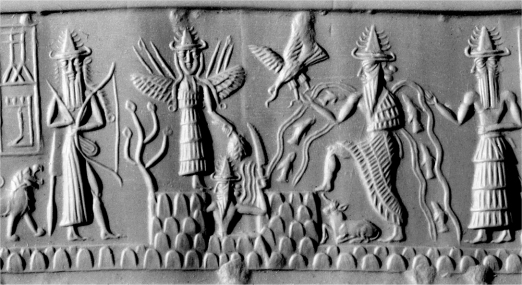
Annunaki With Two Heads
In the Dogon religion, one head or side of the alien Nummo was male, and the other head and side was female. We find this hermaphroditic duality in various ancient cultures including on this cylinder seal of the Anunnaki. The Anunnaki were a group of Sumerian, Akkadian, Assyrian and Babylonian deities. Ea, who was the Akkadian god of subterranean waters and wisdom, was known to the Sumerians as Enki. The Eight Nummo Ancestors, who were part human and part alien Nummo, were fish tailed beings, who provided advanced knowledge to the Dogon people.
Read More
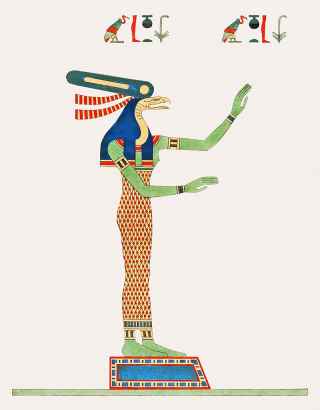
Nummo in Ancient Egypt
The uraeus was a symbol that originated with the Egyptian goddess, WadjetPicture of Wadjet fromThe Rose 2022 v. p. 117 (by Léon-Jean-Joseph Dubois from Pantheon Egyptien), who was known as the green one. She was one of the earliest Egyptian deities and was often depicted as a cobra. The alien Nummo were also green and were referred to as serpents. The Nummo also had gizzards like birds and Wadjet was often depicted with wings.
Read More
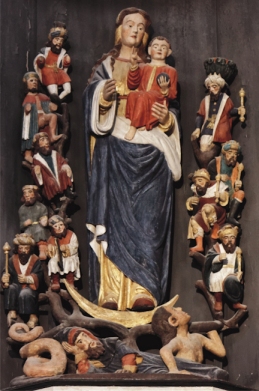
Nummo Ancestor in the Tree of Jesse
In the Dogon religion, Lébé had a human upper body and a fish-tailed or serpent-tailed lower body like the alien Nummo. Lébé was considered the mother of humanity and although she was androgynous, five generations after her birth, humans became single sexed beings. My research indicates that Lébé is being depicted on the Tree of Jesse, inside this shuttered niche, found in the church of Notre-Dame at Saint-Thégonnec in Brittany built between 1563 and 1599. Picture of Tree of Jesse. Original By Thesupermat - Own work, CC BY-SA 3.0, https://commons. wikimedia.org/w/index.php?curid=28315333 Picture cropped and reduced. Shannon Dorey, Manichaeism p. 11
Read More
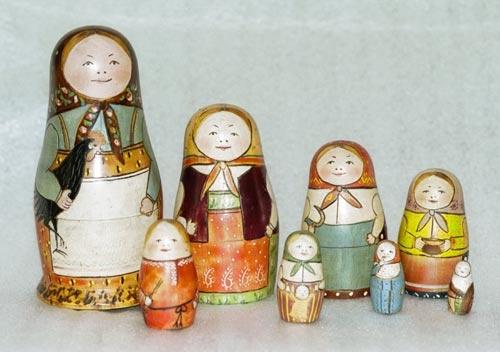
Supernovae and Nesting Dolls
The Dogon believed that the output of the first supernova from the first red giant star formed the basis of the one that followed it. It then formed the basis for the one that followed it and so on. In this way life in the Universe was constantly regenerating and replicating itself. I believe that nesting dolls developed from the Dogon nesting concept of a red giant star, which was associated with the divine feminine in the Dogon religion.
Read More
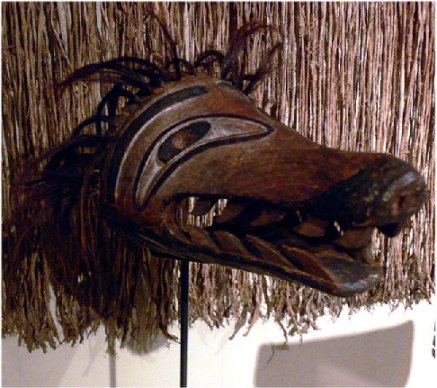
Nummo Ancestors In Indigenous Myths
A story called, Two Brothers Who Changed Things, was told by Indigenous Peoples living in Washington State in the US, and on Vancouver Island in British Columbia, Canada. I believe this story came from the Nuu-chah-nulth people who lived in those areas. One aspect of this mythic tale that is particularly relevant to the Dogon religion, is the fact that the story tells of two brothers who were responsible for changing things on the Earth. The wolf mask Wolf's mask with sharp teeth, from Nootka Sound; North America department, Ethnological Museum, Berlin, Germany (allegedly by James Cook and his crew;) http://commons.wikimedia.org /wiki/File: Wolf_mask_1_Nootka _Sound_EthnM.jpg is from Nootka Sound.
Read More
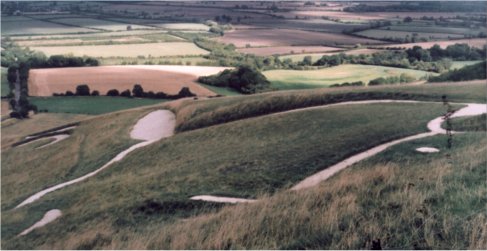
Chalk Mounds Share Common Source
The people who built the Serpent and Lizard Mounds of Ohio believed in the same religion as those who built the White Horse of UffingtonWhite Horse of Uffington, England ©Shannon Dorey, Dragon Hill and other chalk mounds in England. The religion that these two groups believed in was the same religion that was known to the Dogon people of Africa. It is through the Dogon religion that we can connect these two groups of people.
Read More
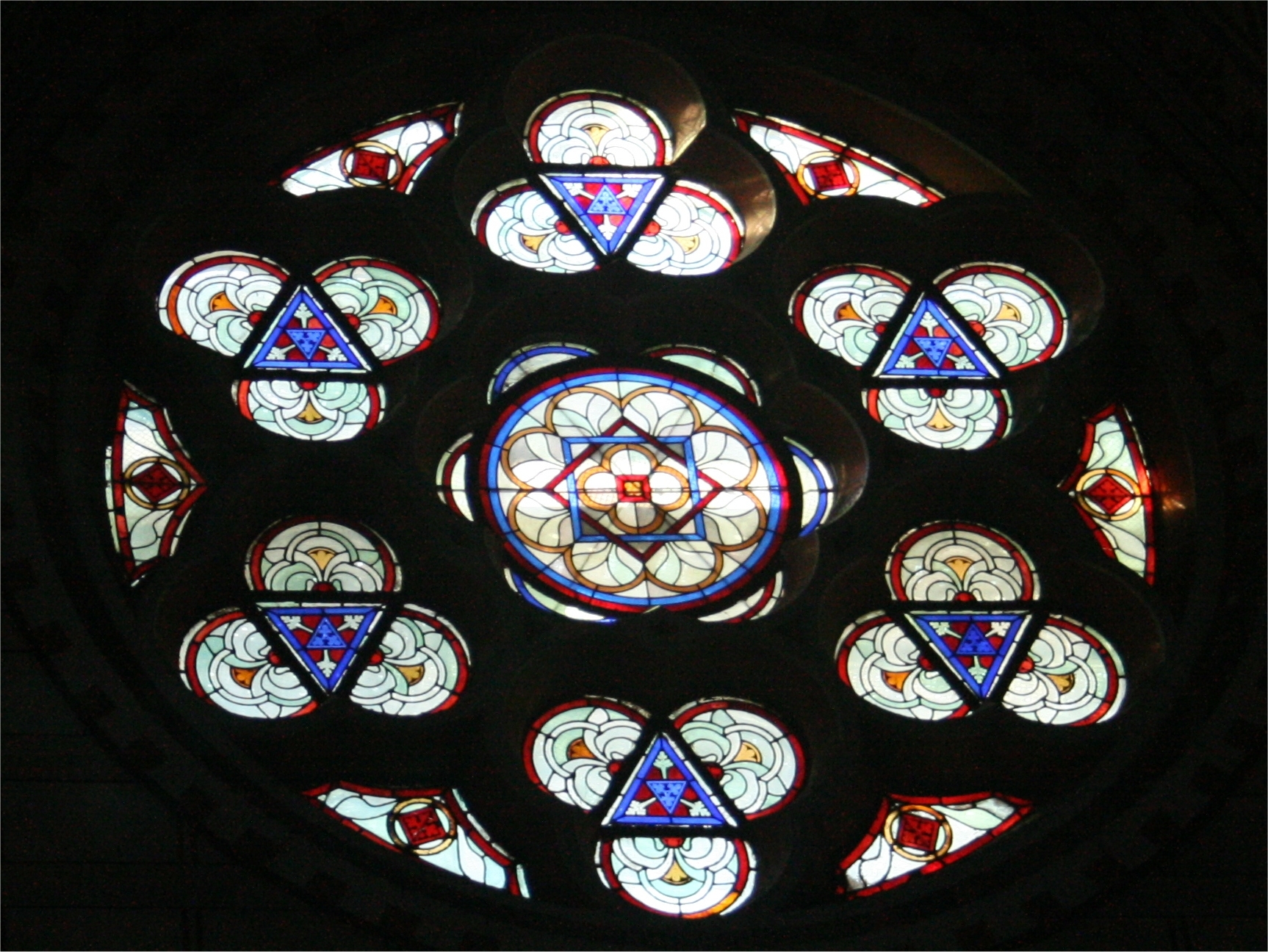
Rose Windows Depict Supernovae
According to Astrophyscists, large red giant stars explode as supernovae regenerating the existing universe and giving birth to new planets and suns. My research in The Rose reveals that the Dogon and other ancient people knew about red giant stars and understood their regenerative properties. Red calabashes were used by the Dogon to symbolize these stars but in Europe a red rose was used.
Read More
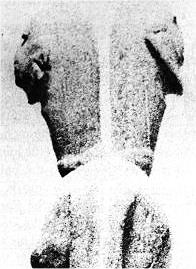
Nummo Twins in World Myths
This Dogon carving of the alien Nummo depicts their androgynous nature with one side being female and the other male. Ancient double headed figurines appear all over the world including Celtic cultures, and are referred to in The Nummo and Day of the Fish.
Read More

Alien Nummo in Christianity and Judaism
The alien fish-tailed Nummo were associated with salvation in early Christianity and Judaism. Early Christians and Jews clothed themselves in fish-skins to mimic the Nummo, and create the illusion of immortality. On this early Christian earthenware lamp in the Museum of Marseilles the soul has "put on the fish" as a garment.Dorey, The Nummo p. 6
Read More
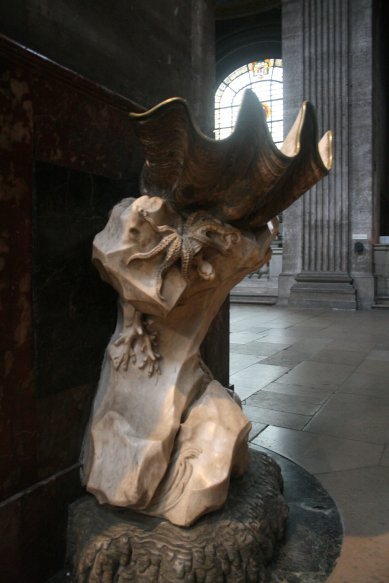
Nummo at Saint-Sulpice
The altar of the Virgin Mary found inside Saint-Sulpice in Paris was created by the French sculptor Jean-Baptiste Pigalle (26 January 1714 - 20 August 1785). The significance of this altar is that it displays the symbolism of the Dogon/pagan religion and the alien Nummo, who were identified with the divine feminine.Read More
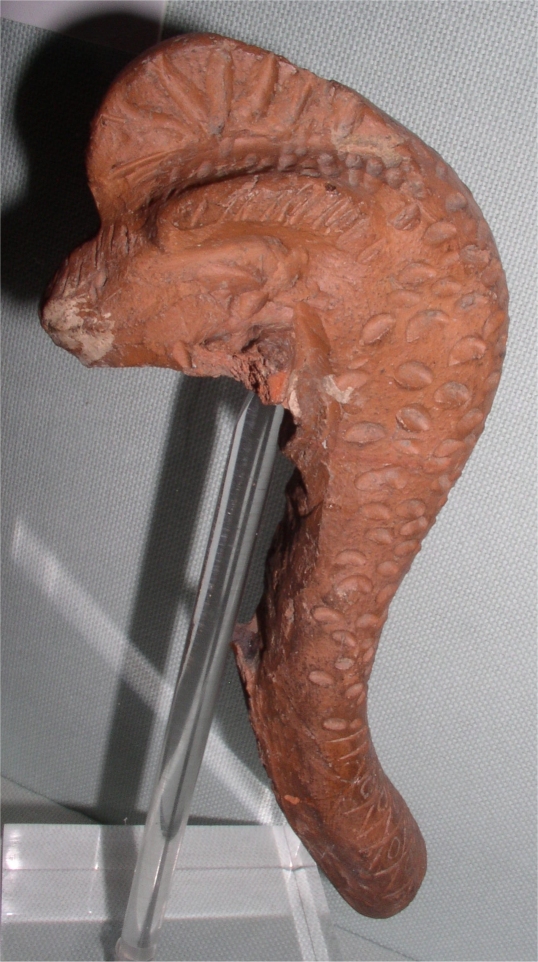
Dogon Symbols at Gobekli Tepe
The symbols found at the 12,000 year old temple at Gobekli Tepe are the same symbols that were known to the Dogon people of Mali, Africa.Read More
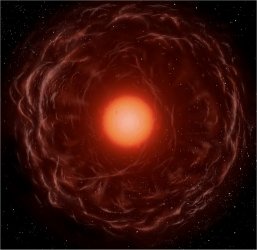
Dogon Recursion and the Cosmos
Einstein believed in life after death because energy never dies. It rotates and transforms itself but it never dies. The Dogon also knew this and according to Ogotemmêli, "To draw up and then return what one has drawn - that is the life of the world." The Dogon described three red giant stars as contributing to the creation and the regeneration of our Milky Way Galaxy and Solar System.http://www.esa.int/ spaceinimages/Images/ 2006/08/Artist_s_impression _of_a_red-giant_star_ ejecting_matter ESA Photo Credit: JAXA Released 29/08/2006 11:03 am
Read More
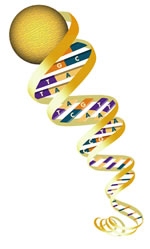
Dogon Genetic Symbolism
In The Master (Mistress) of Speech, I describe the genetic engineering carried out by the Nummo. The Dogon elder Ogotemmêli associated DNA strands with a fibrous skirt that fell in coils, covered the Earth's genitalia and was used for the ordering of the Universe. Genetics plays an important role in the religion and hands and feet were used as genetic symbols. This article describes the back of the hand of Sabazius, the sky father god of the Phrygians and Thracians, who has similarities to the Dogon god Amma.
Read More
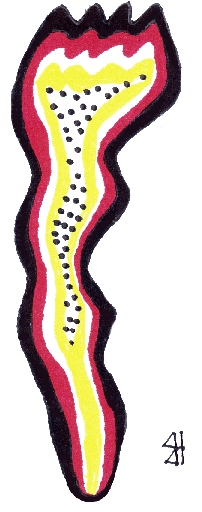
Alien Nummo were Rainbow Serpents
The water and rainbow aspects of the Australian Rainbow Serpent help associate the Serpent with the alien Nummo, who were also known as Rainbow Serpents by the Dogon people. Water was the essence of the Nummo and the words water and Nummo were used interchangeably. The first images of Australian Rainbow Serpents appear in the rock art at the time of the Yam period identified by George Chaloupka, the foremost expert on the rock art of Arnhem Land, beginning around 6000 years ago. The Nummo have an ancient association with the Earth.
Read More
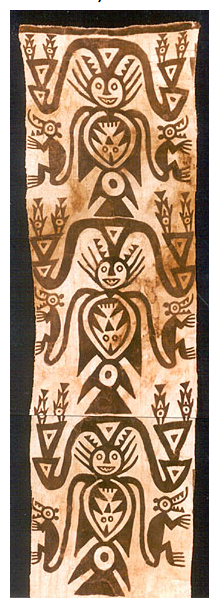
Nummo Catfish in Peru
The alien Nummo were depicted as catfish in drawings by the Dogon people. On ancient Peruvian textiles, the catfish appears in conjunction with other Dogon symbolism suggesting that the Nummo also played a role in the ancient religion of Peru. The smaller fish shown inside the larger fish is also relevant because in regenerating Lébé, the Master (Mistress) of Speech (Seventh Nummo Ancestor) was believed to have first swallowed and then regurgitated Lébé. This was to indicate that the DNA from the Seventh Ancestor was used in the regeneration of Lébé, considered the mother of humanity.
Read More
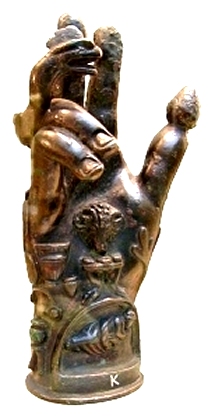
Hand and Foot Symbols Part I
In Day of the Fish, I devote an entire chapter to hand and foot symbolism because of its importance to the Dogon religion. The Nummo didn't have hands and feet like humans so depictions of hands and feet were used in the religion as genetic symbols. The symbols on the bronze hand above, which was used in the worship of Sabazius, a god of Thracian or Phrygian (Ancient Turkey) origin, are associated with the Dogon religion.http://en.wikipedia.org/wiki/ Sabazios#mediaviewer /File:HandOfSabazius.JPG Author: Mike Young Located at the British Museum
Read More
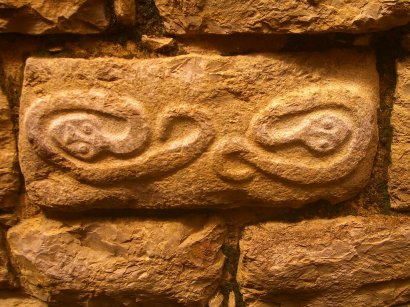
Nummo Appear on Kuélap fortress
The alien Nummo were described as twin serpents by the Dogon of Mali because they were hermaphrodites. Twin serpents appear in reliefs of the Kuélap fortress of Peru, which shows serpents in opposite directions on the inner wall of the Peruvian fortress. It was built by the Chachapoyas people, who were known as the "Warriors of the Clouds". The Nummo were depicted as twins in opposite directions on Dogon carvings, which I believe associates them with this carving from Kuélap. Dual catfish with serpent-like bodies also appear on a tapestry-weave tunic from the Nazca-Wari culture of Peru, further associating the Peruvian artifacts with the alien Nummo, who were catfish serpents.Photo of twin serpents by Von luiluilui - Eigenes Werk, CC BY-SA 3.0, https://commons.wikimedia. org/w/index.php?curid =10753821
Read More
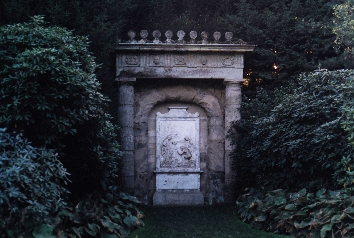
Shugborough Shepherd's Monument
I was first interested in Shugborough at Staffordshire in Lichfield, England because the three key figures of the ancient African Dogon religion appear on the Shugborough coat of arms. The secret code on the Shepherd's Monument has been a mystery since the monument was first built by the Anson family in the 1760s. One theory is that it is "hiding a set of instructions on how to find the Holy Grail, the chalice in which the blood of Jesus was collected as it fell from his crucified wounds."
Read More
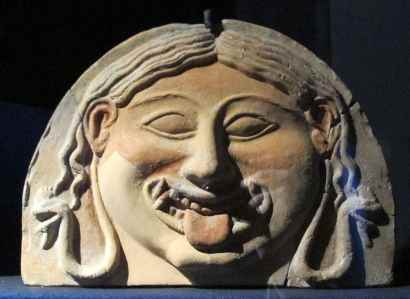
Gorgons Were the Nummo
This is an antefix of a Gorgon dated 510-500 BCE from Taranto, Italy.By Sailko - Own work, CC BY 3.0, https://commons.wikimedia.org/ w/index.php?curid=31977145 Antefissa semiellittica con gorgone, 510-500 ac ca., da taranto (MAN taranto).JPG The significance of this piece, aside from the whiskers, are the dual serpents. My research reveals that Gorgons, who were later demonized by the patriarchal Greeks, were representations of the Nummo. During his research on Greek mythology, Karl Kerényi associated the Gorgon with a sea goddess. The Nummo, who were primarliy aquatic beings, were identified with the sacred feminine.
Read More
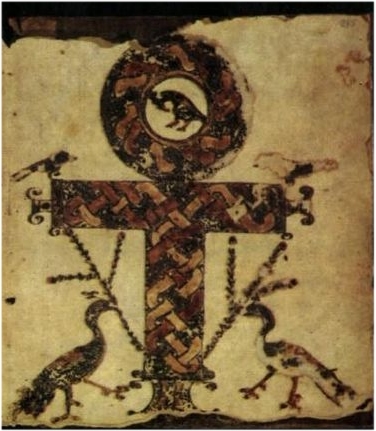
Dogon Hammer and Anvil
The anvil is a symbol of the female in pagan religions. According to the Dogon religion, the alien Nummo were hermaphrodites and the hammer and anvil together were a symbol of the Nummo. The anvil symbolized the female aspect of the hermaprhoditic Nummo, while the hammer or cross represented the male aspect. Because the anvil was associated with the sacred feminine, it was later removed from Christian manuscripts.Dorey, The Nummo p. 46
Read More
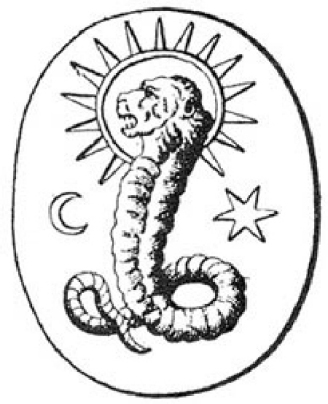
Alien Hybrid Ancestor of Humanity in Gnosticism
Lébé was immortal and symbolized by the lion, and she/he also had a serpent-like tail. This is a picture of a lion-faced deity found on a Gnostic gem in Bernard de Montfaucon’s L’antiquité expliquée et représentée en figures. The sun appears behind the lion’s head. The moon is on the left, which is consistent with Dogon symbolism. The six-pointed star was a symbol of the first human and in this instance is probably being identified with the planet Venus.
Read More

Nummo meant Manatee
In Masques Dogons (1938), Griaule pointed out that the word Nummo, to describe the alien water beings, also meant manatee. Seven stone carvings of manatees, which were described as being religious in nature, were found in the mounds of the Mississippi Valley around the 1800s. I believe that these carvings are associated with the alien Nummo and are ancient. Stone carvings of mastodons were also found in the mounds suggesting that the manatee carvings date to the time of the mastodon.
Read More
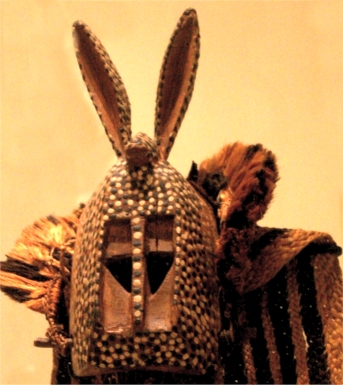
Creation of the Moon
The rectangle of the Dogon Rabbit Mask dommo, represented the damage caused by Ogo's experiment on our Second Sun. The two parts of the rabbit’s ears recalled the separation of the Twin Suns. The right side identified with our remaining Sun and the Yéban (Nummo), was untouched and safe but the left side, identified with the Moon and the first human Andoumboulou, represented death and mortality. The red dots sprinkled over the face of the Rabbit Mask was the Po Banu, “red fonio”, which represented the damaged seeds or stars that would subsequently be created because of Ogo's deeds. Mexicans have similar stories that I believe are associated with the Dogon religion involving the Moon Rabbit.
Read More
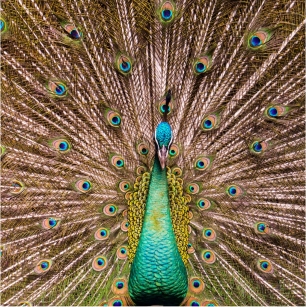 By Mallory Cessair - Own work, CC BY-SA 4.0, https://commons.wikimedia.org/w/ index.php?curid=132676561 Gembira Loka Zoo, Yogyakarta (cropped)
By Mallory Cessair - Own work, CC BY-SA 4.0, https://commons.wikimedia.org/w/ index.php?curid=132676561 Gembira Loka Zoo, Yogyakarta (cropped)
Seventh Ancestor was the Peacock Angel
The peacock is an important ancient symbol that I believe originated with the Seventh Nummo Ancestor, who was also known as the Master (Mistress) of Speech. Before Christianity, the peacock became a symbol of the Roman Goddess Juno, who was also the Greek Hera. Once Christianity came into vogue, the peacock was a symbol for Jesus Christ.Dorey, The Nummo p. 64 I believe that the Peacock Angel Tawûsê Melek worshipped by the Yazidis, who trace their roots back to ancient Mesopotamia, is also associated with the Seventh Nummo Ancestor (Master (Mistress) of Speech).Dorey, Day of the Fish p. 79
Read More
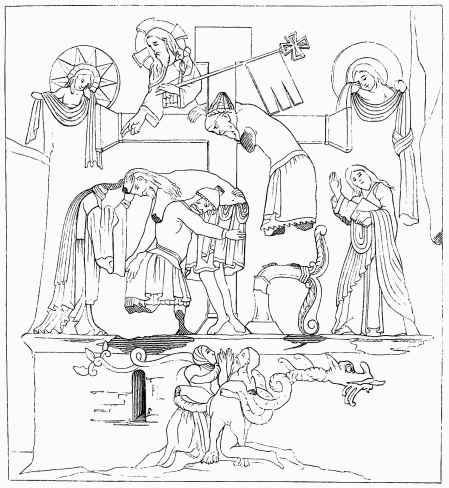
Nummo on the Externsteine Relief
and in the Catacombs
A serpent-like figure, shown at the bottom of this 1862 drawing of the Externsteine Relief, is associated with the green, alien Nummo. The figure has whiskers, horns and a long serpent-like tail, which is also seen in the Roman catacombs of San Callisto, and dated to the second century.Shannon Dorey, The Nummo, 2019 edition, p. 5 The alien Nummo were green aquatic beings, who were associated with serpents because when they moved on land, they looked like serpents. Both the relief of the Externsteine and the painting from the San Callisto catacombs are depicting the regeneration of Lébé as it was known to the Dogon people of Mali, Africa.Shannon Dorey, The Nummo, 2019 edition, p. 186
Read More
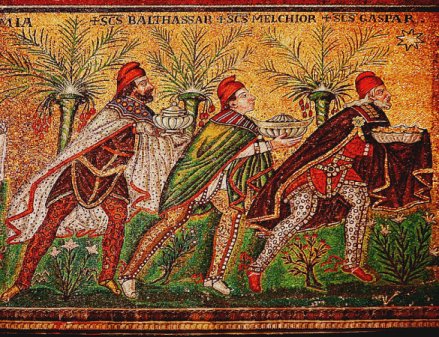 Three Wise Men 526 AD Photo by Nina Aldin Thune https://commons.wikimedia.org/wiki/ File:Magi_(1).jpg Basilica of Sant'Apollinare Nuovo in Ravenna, Italy: "The Three Wise Men" (named Balthasar, Melchior, and Gaspar). Detail from: "Mary and Child, surrounded by angels", mosaic of a Ravennate Italian-Byzantine workshop, completed within 526 AD by the so-called "Master of Sant'Apollinare". Photo by Nina Aldin Thune
Three Wise Men 526 AD Photo by Nina Aldin Thune https://commons.wikimedia.org/wiki/ File:Magi_(1).jpg Basilica of Sant'Apollinare Nuovo in Ravenna, Italy: "The Three Wise Men" (named Balthasar, Melchior, and Gaspar). Detail from: "Mary and Child, surrounded by angels", mosaic of a Ravennate Italian-Byzantine workshop, completed within 526 AD by the so-called "Master of Sant'Apollinare". Photo by Nina Aldin Thune
Were the Three Wisemen
Originally the Three Marys?
The three stars of Orion's Belt, which Christians associate with the three Magi on their way to Bethlehem, were important to the Dogon. According to the alien Nummo, it was a red giant star located where Mintaka is located today that exploded as a supernova to form the Milky Way Galaxy. The three Magi are being associated with the three Belt stars in this mosaic from a Ravennate Italian-Byzantine workshop and dated 526. The Dogon associated the three stars with the divine feminine because red giant stars were considered pregnant suns that exploded to give birth to new worlds.Shannon Dorey, The Rose: Dogon Star Knowledge, 2022 edition, p. 186
Read More
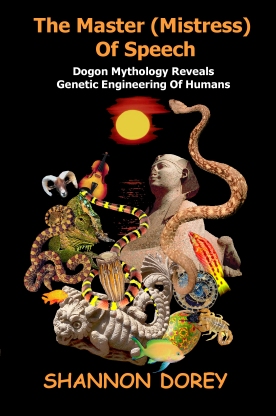
The Master (Mistress) of Speech
The Master (Mistress) of Speech deciphers the ancient mythology of the Dogon, an isolated African people, whose religion was recorded by the French anthropologists Marcel Griaule and Germaine Dieterlen beginning in the 1930s.
The religion focuses on alien beings known as Nummo, who were responsible for human creation through genetic engineering. Dorey reveals that their contact with the Earth resulted in the evolution of most of the world's major religions.
Buy Book
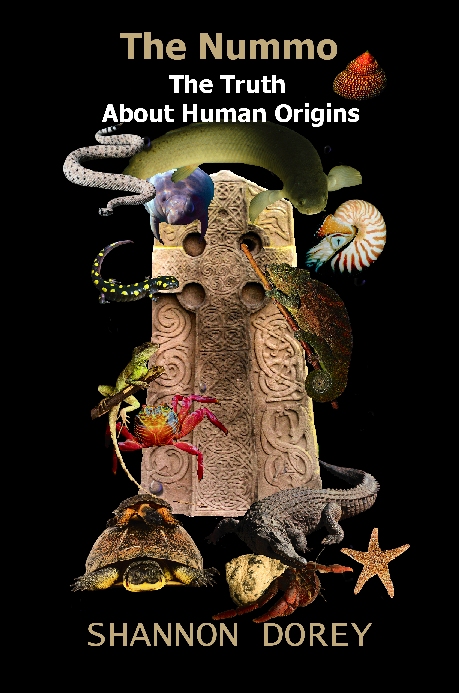
The Nummo
In The Nummo, Dorey refers to "Mitochondrial Eve", the name given by researchers to the woman who was the last common matrilineal ancestor of all human beings living today. A member of a population of humans living around 150,000 years ago in Africa, Eve was identified through "mitochondria organelles" that are only passed from mother to offspring. The Dogon associated this figure with the Dogon Ancestor Lébé, who they considered the mother of humanity. She was a hermaphrodite, who was part humand and part Nummo and immortal. The Nummo and the first humans were also immortal.
Buy Book
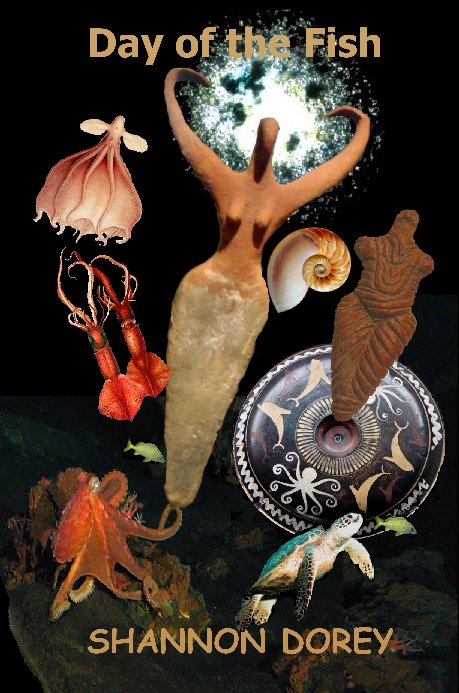
Day of the Fish
In Day of the Fish, Dorey reveals that the alien Nummo were hermaphrodites but identified with the sacred feminine, and were the Goddesses known to the people of Old Europe. She follows the Dogon religious symbols from Old Europe to Japan and from Australia to the Americas to reveal the lost history of humanity.
Buy Book
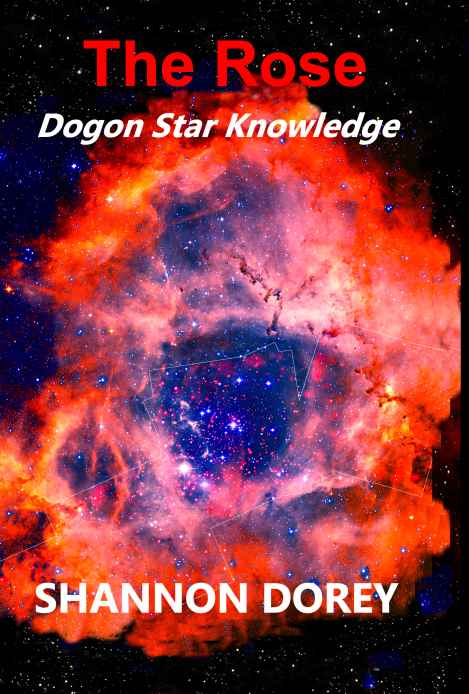
The Rose: Dogon Star Knowledge
This book focuses on the star knowledge that was imparted to the Dogon people by the Nummo, who lived in the Solar System before humanity. Symbolism suggests they came from Mars and may have been associated with the Alpha Centauri System. The main purpose of the Dogon religion was to warn humanity about fail-safes embedded into the Universe to protect it. The Nummo were unaware of these fail-safes when they carried out an experiment that destroyed life on Mars, and ultimately left our Solar System with only one Sun.
Buy Book